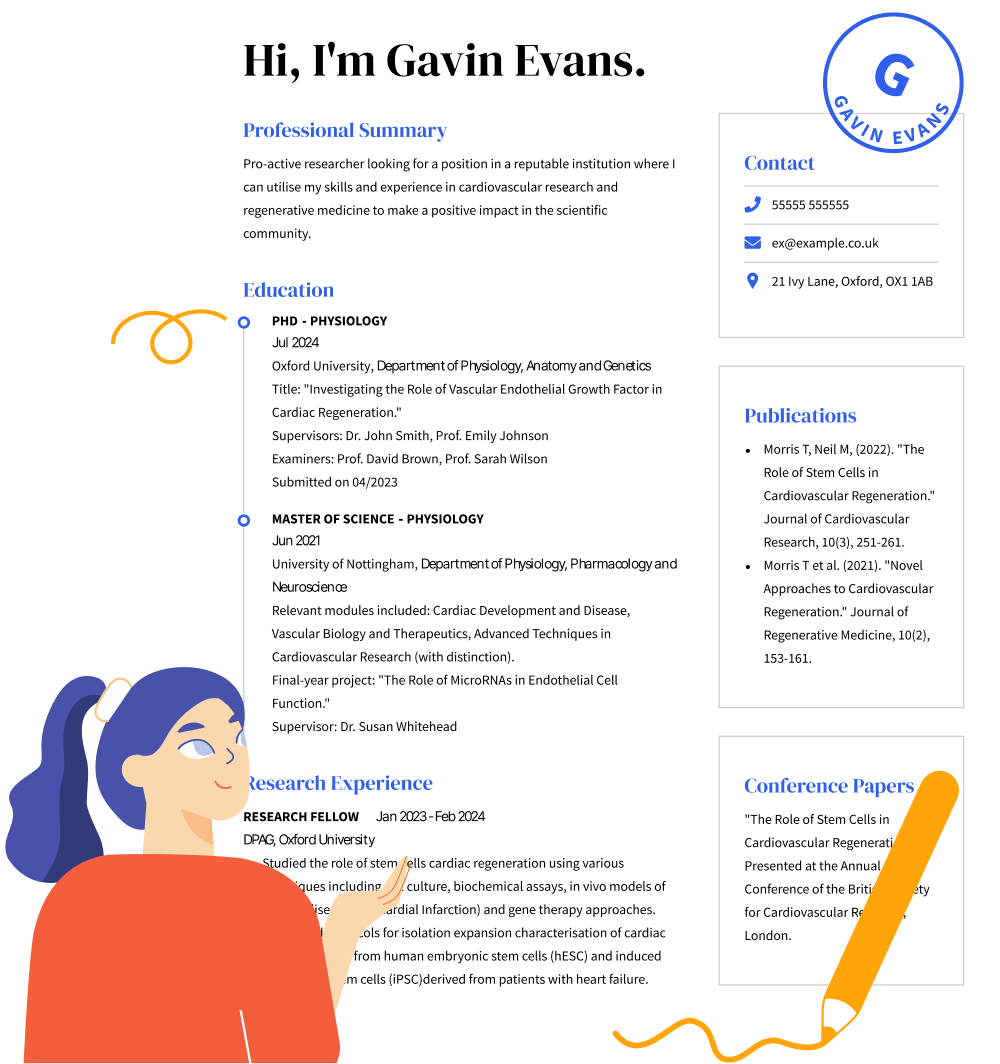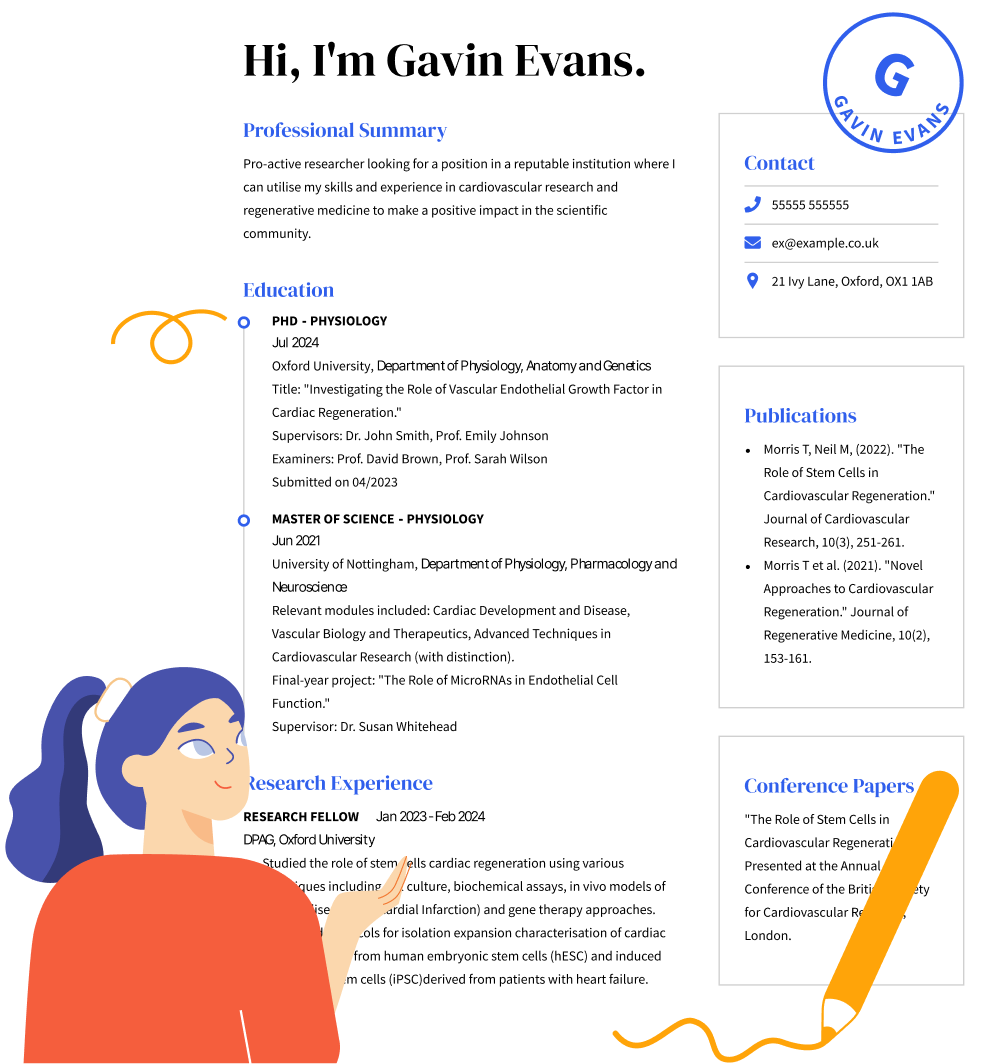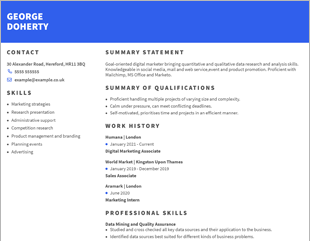Veterinary assistant CV examples to use this year
Secure a veterinary assistant job with these veterinary assistant CV examples and tips for creating a CV that best shows your skills and experience.
Secure a veterinary assistant job with these veterinary assistant CV examples and tips for creating a CV that best shows your skills and experience.





OUR USERS HAVE BEEN HIRED BY
Veterinary assistants are critical to a functioning veterinary clinic and help to provide vital healthcare to our furry friends.
Candidates looking for a job as a vet’s assistant will need to show hiring managers and recruiters that they have the right skills and experience for the role. That includes knowledge of animal science and veterinary medicine, as well as a strong mix of technical and interpersonal skills.
The structure of your CV should be set up like the following:
The CV header section is the first section of your CV and presents your contact information:
If you have lots of work experience and accomplishments, you can also include a link to professional networking sites – any links that provide the hiring manager with more information about your experience in animal hospitals or vet’s offices.
The CV summary provides a rundown of your best skills and experiences. This section is usually two to three sentences long that aims to hook the recruiter and encourage them to keep reading your CV.
In this section, you should highlight useful skills, certifications or experience that fit what the job is looking for, and show that you can provide exemplary animal care.
If you don’t have a lot of work experience as a veterinary assistant, then you can use a CV objective. A CV objective sums up your career ambitions instead of your achievements. Briefly explain your intentions for the role and list skills that show you’re the right candidate.
Depending on the type of CV format you choose, the skills section might be the most crucial part of your CV. A functional CV will showcase skills instead of experience to make up for a lack of experience. Your CV skills section should contain a mixture of both hard skills and soft skills.
Hard skills are role-specific and learned through training, with hiring managers usually expecting candidates to have these skills before applying. Soft skills such as communication and interpersonal abilities are transferable across many different industries and help to support candidates as they fulfill their primary responsibilities.
If you can’t think of the right assistant skills for your vet assistant CV, then consider including these bullet points for the best CV:
Your work experience section will vary in length and depth depending on your experience. List your work history in reverse chronological order, starting from the most recent experience. This ensures that you provide the hiring manager with the most up-to-date information about your skills and experience.
Include your previous employer’s company name, location and the dates you worked there. Focus on featuring a few bullet points for each job, highlighting your top duties and achievements at the job.
To become a veterinary assistant, you will need a high school diploma or an equivalent qualification. You should also how that you’ve completed a veterinary assistant program or completed formal training under the supervision of a veterinary technician or fully qualified vet.
If you went to college, then list your degree at the top of this section, alongside any notable achievements such as making the dean’s list or graduating with honors.
Yes! Cover letters are a good opportunity for you to explain your skills and key experience in greater detail. A cover letter can act as crucial support to your CV and is especially useful for explaining why you’re the ideal candidate if you don’t have lots of industry experience. In your cover letter, you can also talk about any non-professional experiences (e.g., volunteering in animal care settings) that can be beneficial to your application.
Thoroughly proofread. Keep your sentences short. Customize your CV for each application (e.g., updating your CV summary and skills section to directly address what the specific job needs)
To create the most successful CV you can, you’ll need to customise it for every application. To do this, incorporate the role-specific keywords from the job description into your summary, work history and skills sections. Make sure to write a fresh objective or summary for each application, referencing experience, skills or knowledge that is directly applicable to the role.
We personalize your experience.
We use cookies in our website to ensure we give you the best experience, get to know our users and deliver better marketing. For this purpose, we may share the information collected with third parties. By clicking “Allow cookies” you give us your consent to use all cookies. If you prefer to manage your cookies click on the “Manage cookies” link below.